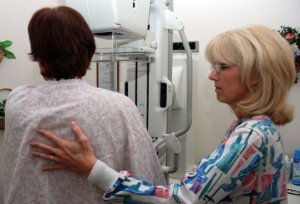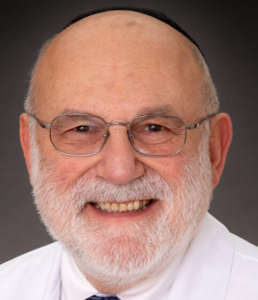
Digital mammograms can miss breast cancer; the rate of false negatives is higher in women with dense breast tissue.
“In older mammograms used for premenopausal women, the false negative in some studies was as high as 40 percent,” says Dennis Citrin, MD, PhD, a board-certified medical oncologist who works with a team of experts to help patients fight breast cancer at City of Hope Chicago.
“Over the past decade, technology has drastically advanced, and the new digital mammograms are much more sensitive than the older ones,” says Dr. Citrin.
“Note that a mammogram is a test to screen totally asymptomatic women – those who have no complaints or suspicion of breast cancer, but want to detect it at the earliest moment.”
Study Reveals False Negative (Cancer Miss Rate) of Digital Mammograms
A study (Annals of Internal Medicine, Nelson et al, 2016) investigated the false negative (and positive) rates.
• Heidi D. Nelson, MD’s, study involved 405,191 women, 40-89, who underwent digital mammogram screening between 2003 and 2011.
• The records were derived from participating facilities at five American Breast Cancer Surveillance Consortium breast imaging registries – that were linked to pathology databases and tumor registries.
• 2,963 women were diagnosed with invasive breast cancer or ductal carcinoma in situ within 12 months of the screening.
Digital Rates of Missed Breast Cancer Overall
The study showed that the rate tended to go up with increasing age, but not dramatically.
The rate was 1.0 to 1.5 per 1,000 women. This means one-tenth to one-fifth of a percent.
Within the population of women whose cancer was missed by the digital mammograms, there were sub-populations that showed a stronger correlation to these false negatives.
• Higher in women 40-79 who also had first-degree relatives with BC.
• This higher rate was of borderline significance statistically for those 50-69.
What about digital mammogram false positive rates of dense breasts?
There are four categories of breast composition: fatty, scattered density, heterogeneous density and extremely dense.
• Ages 40-69: Fatty and scattered density had lower false negative rates than did denser breasts.
• Ages 50-89: Cancer miss rates were higher in this group if these women had a previous biopsy result of benign.
• All ages, women with fatty breasts: False negative rate was lowest. In fact, so was the rate of false positives and call-backs.
• You probably know what’s coming: The missed cancer rate for women with extremely dense breasts was highest – except for ages 60-69.
This study is not engraved in gold, as this topic of investigation is under-investigated.
Furthermore, the study authors acknowledge a few limitations to the investigation, including the actual numbers of first- and second-degree relatives who had breast cancer.
“When it comes to the question surrounding the miss rate on mammograms for fatty breasts versus dense breasts, it is more difficult to determine breast cancer in women with dense breasts,” explains Dr. Citrin.
“In a premenopausal woman where the breast is constantly stimulated by sex hormones, the breast is predominantly glandular tissue. This appears dense on the mammogram.
“As a woman goes into menopause and gets older, as long as she is not using hormonal replacements, the breast(s) become less dense radiologically.
“Tumors show up as densities. Therefore, if the breast is dense and causing a lot of ‘background noise’ in the image, it is more likely to obscure the tumor.”



























